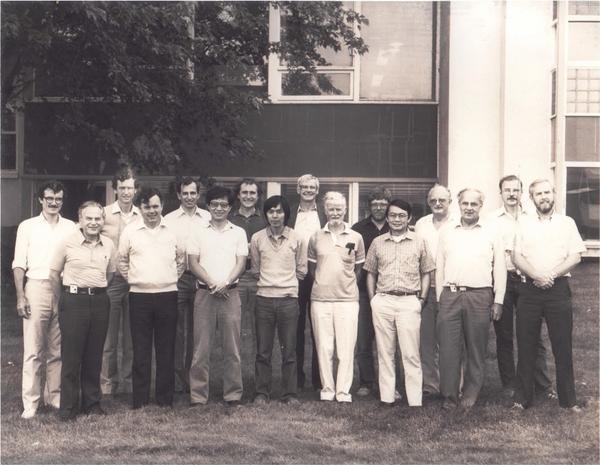Remembering George Ewan

George Ewan 1927-2020: Original Canadian Spokesperson of the SNO Experiment
Professor Emeritus George Ewan of Queen’s University passed away in Kingston, Ontario on December 7, 2020. Professor Ewan was the original Canadian Spokesperson for the SNO project when it was founded in 1984, together with Professor Herb Chen of University of California, Irvine. They were joined the next year by Professor David Sinclair as UK Spokesperson. Professor Ewan worked tirelessly in the physical, scientific and political development of the SNO project, leading to its funding in 1989. He continued to play a substantial role as Chair of the SNO Scientific Management Committee before and after his retirement from Queen’s in 1994. His calm, friendly and skilled scientific leadership was appreciated by all his colleagues and he was a major contributing factor in the success of the SNO experiment.
Professor Ewan obtained his PhD in nuclear physics from the University of Edinburgh in 1952 and was a Post-Doctoral Fellow at McGill University until 1955 when he accepted a research position at Chalk River Nuclear Laboratories. He was a well-known expert in nuclear physics and was recognized by the American Nuclear Society for the first use of a Germanium gamma ray detector in a nuclear physics experiment. This type of detector revolutionized the science of gamma ray detection, providing vastly improved resolution and leading to many applications in nuclear science, medicine and industry. In 1970 he accepted a Professorship at Queen’s University and served as Department Head from 1974-77. He was the author of more than 110 front-line publications in nuclear and particle physics.
He received many honours throughout his career, including the Canadian Association of Physicists (CAP) Gold Medal for Lifetime Achievement, the Radiation Industry Award of the American Nuclear Society, the Sigma Xi Fund of Canada Award for Scientific Achievement, The Breakthrough Prize in Fundamental Physics and the NSERC John C. Polanyi Prize with the SNO Collaboration and Honorary Degrees from Laurentian University, the University of Guelph and Queen’s University. He was a Fellow of the Royal Society of Canada, the Royal Society of Edinburgh, the Royal Society of Arts and the American Physical Society. He served as Chair of Review committees for NSERC, the Royal Society of Canada, NRC, TRIUMF, CAP, University of Alberta, McGill and Victoria and international agencies in the US and Sweden.
At the time of formation of the SNO Collaboration in 1984, with 16 original scientists, George Ewan had already been investigating the possibility of an underground laboratory in Sudbury and had encouraging discussions with INCO management. This initiative coalesced with the suggestion by Herb Chen for the use of heavy water in the detection of solar neutrinos and led to the SNO experiment. INCO and Atomic Energy of Canada (owners of the heavy water) and local Sudbury leaders were very cooperative, contributing to the successful funding decision. Details of the work that led to this decision are described in two papers by G.T. Ewan and W. F. Davidson published in Physics in Canada Vol 61, 2005, pgs. 339-350.
George Ewan’s leadership during this period is clearly described and involved strong scientific judgement and personal leadership. It also required excellent communication and political skills in obtaining support for a project that was of a much larger scale than had typically been funded by a single government agency in Canada. His efforts at that time and his inspiration and mentoring of colleagues led to the success of the SNO experiment. That was followed by the development of the SNOLAB facility where many ongoing international experiments now benefit from the low radioactivity environment 2 km underground.
A true pioneer, George Ewan has left a legacy for Canadian and international science. He will be missed.
Art McDonald
Gordon and Patricia Gray Chair in Particle Astrophysics, Emeritus, Nobel Physics Laureate 2015, Professor Emeritus at Queen’s University, Director of the Sudbury Neutrino Observatory